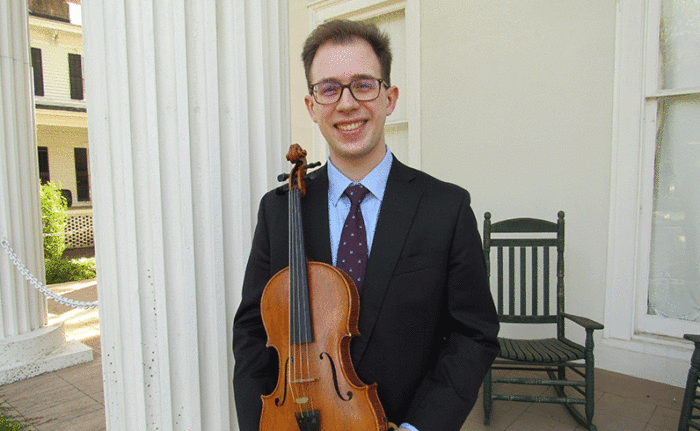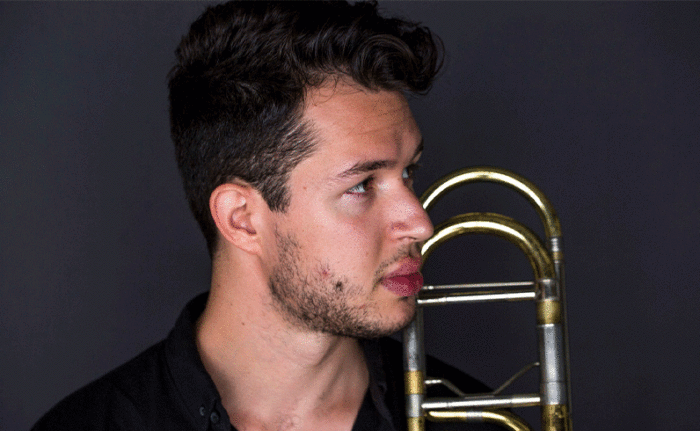Professional musicians typically feel an intimate connection with their instruments. As vehicles for self-expression, musical instruments are like musicians’ voices, and after hours of practice, rehearsal, and performance, an instrument can begin to feel like a natural extension of a musician’s body.
These precious works of art often have unique, even dramatic backstories, with mysterious provenances, mistaken (or forged) identities, and rare musical qualities. The instruments that grace the Jones Hall stage are no exception. Here, a few of the Houston Symphony’s musicians share the remarkable stories of their treasured instruments.
luthier [ˇlu ti ər] noun a maker of stringed instruments, as violins, violas, cellos, or basses.
Tim Dilenschneider, associate principal double bass
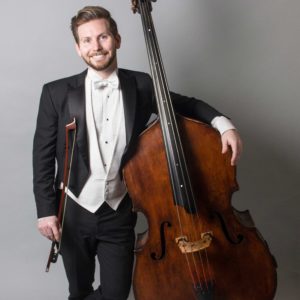
I perform on an Italian bass made by Enrico Bajoni in Milan, Italy in 1878. The instrument bears an inscription of the year, location, and name of the maker on the inside lower part of the rib. The back, sides, and scroll are made of poplar and the top is made of spruce. The size is the first thing people usually notice, as it is extremely small for a bass, but despite its modest dimensions it has a very powerful sound that is usually associated with much larger instruments. This makes it perfect for both orchestral and solo playing and is a major factor in why I fell in love with the instrument. This bass is an excellent example of the maker’s work, and because it is so well preserved, it has been used to help identify other instruments Enrico Bajoni made that were either incorrectly or falsely labeled. A fun fact about my instrument is that it was formerly part of the collection at the Curtis Institute of Music, my alma mater, and still bears the school’s stamp on its back. associate principal double bass.
Brinton Averil Smith, principal cello
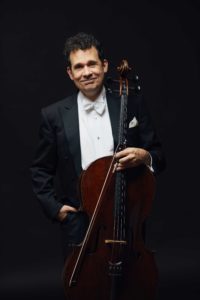
Finding a cello is a long and arduous process. When searching for a cello, you must fly to other cities (typically New York and Chicago in the States) to try them. If you like a cello, you must then buy an airline seat to bring it back home for a longer trial (and another to return it if it does not work out). Additionally, the best cellos are generally considered to be the instruments made between 300 and 400 years ago in Italy. For most other musicians, top quality instruments are valuable but still attainable, but for string players, many of the best violins, violas, and cellos can run into the millions or even the tens of millions of dollars. As you can imagine, they are beyond the reach of most working musicians.
However, it is possible to be a bargain hunter. During my search from 2007 to 2009, I tried perhaps 150 cellos and brought eight or nine back to Houston. I finally found a cello that I loved whose maker was unknown. The lack of attribution allowed me to buy a 300-year-old Italian cello for a comparatively low price. I called it a “Costo Generic” Italian cello. Over the next 10 years, my cello became the subject of slow, methodical detective work as I endeavored to solve the mystery of its creation: dendrochronology determined the age of its youngest growth rings (1692), and after two visits to the world’s leading authority in London, I finally received a positive identification that it was made by the Brescian luthier Gaetano Pasta, circa 1710–20.
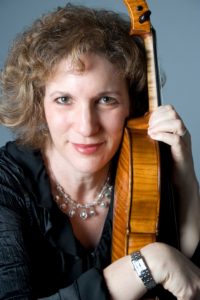
Linda Goldstein, viola
My viola was created by the Italian craftsman Alta Vila around 1908. He was part of what was called the Neapolitan School of luthiers. As anyone who has ever glanced inside any string instrument knows, most luthiers stamp their names on the interiors of the instruments they make. Alta Vila was known for stamping the names of more famous contemporaries inside his instruments in order to make easier sales! In my case, he stamped in Gagliano Filius. I bought my instrument in New York City; I fell in love with it after playing only one scale! I usually play with an English bow made by William Hill from the same time period.
Mark Nuccio, principal clarinet
Choosing clarinets is not an easy process. This picture was taken on one of about 50 trips I have made over the years to one of the headquarters of the world-renowned clarinet maker Buffet Crampon, either in Paris (approximately four trips) or, more often, in Jacksonville, Florida. It shows only one of the three rooms filled with clarinets for me to examine during a single trip. My trips to Jacksonville are always made with the understanding that I will take the best set of instruments available if they are better than anything I currently own. I also choose instruments for other professional clarinetists as well as two music dealers. Each visit to Jacksonville takes two to three days since Buffet clarinets are hand-finished, and I have been regularly engaged in this process for 25 years. It is a labor of love for the art.
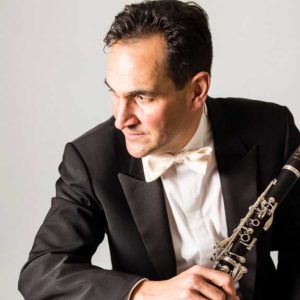
As you may have heard, on January 28, 2020, my clarinets were stolen from my vehicle—I had left them on the backseat floor for five minutes while I was in a store. The instruments stolen in January were two out of approximately 10,000 clarinets I had tried during previous trips to Buffet Crampon! They will not be easy to replace.
How did I choose to play the clarinet in the first place? Both my father and mother were clarinet players, so when my parents asked me what instrument I wanted to play in 4th grade, the question was, “Do you want to play the clarinet or something else?” If I chose the clarinet, I could play my father’s professional instrument—my father was a professional clarinetist in the Air Force Academy Band and played on a Buffet R13 clarinet, the same model I play in the Houston Symphony. If not, I would likely have a student-line rental trumpet or set of drums. I thought that the clarinet might be nice since I could use Dad’s, and it was a first-rate instrument.
Christian Schubert, clarinet
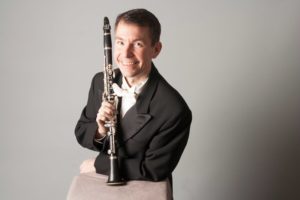
Because clarinets have optimal response and beauty of sound during the first five years they are played onstage in the orchestra, we clarinetists are always looking for our next great set of horns. On a standard symphony concert, clarinetists usually use two clarinets: one pitched in the key of B-flat and one in the key of A. I found my new set this past November and February. My colleague Sasha Potiomkin found my new A clarinet during an instrument buying trip to Paris last November, and I was equally thrilled to purchase a new B-flat clarinet from the largest lot (twenty-five!) of brand new Buffet Prestige clarinets that were sent from Buffet in Paris to Mark Nuccio shortly after his clarinets were stolen.
Even though I purchased them in November and February, it was not until the middle of April that they arrived back from my instrument technician in Ohio. He rebuilds the instruments to fit in my hands better and respond and tune perfectly. The excitement of knowing how great these two instruments sounded in Jones Hall before the rebuilding was huge, but the biggest excitement will be when we are back in Jones Hall and I can hear them onstage fully optimized. I feel fortunate that this set will probably turn out to be the best I have ever played in Jones Hall.

